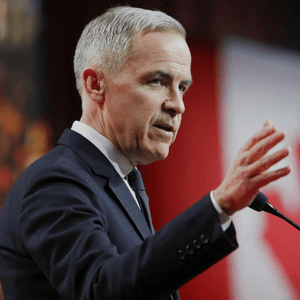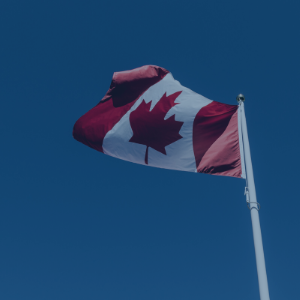
The Liberals have extended their lead nationally with only a week left in the campaign, buoyed by support in Quebec and Ontario and by the stalling momentum of the other major parties. This is the finding from an INNOVATIVE survey in field from September 10th to September 12th, 2021 with a weighted sample size of 2,400. Detailed methodology is provided in the appendix.
Horserace
The Liberals have slightly extended their lead to 5 points nationally. The CPC and NDP are stable in the raw vote but the Liberals are as undecided voters make up their minds. The campaign has been rocky for Justin Trudeau’s party, but they may be righting the ship.
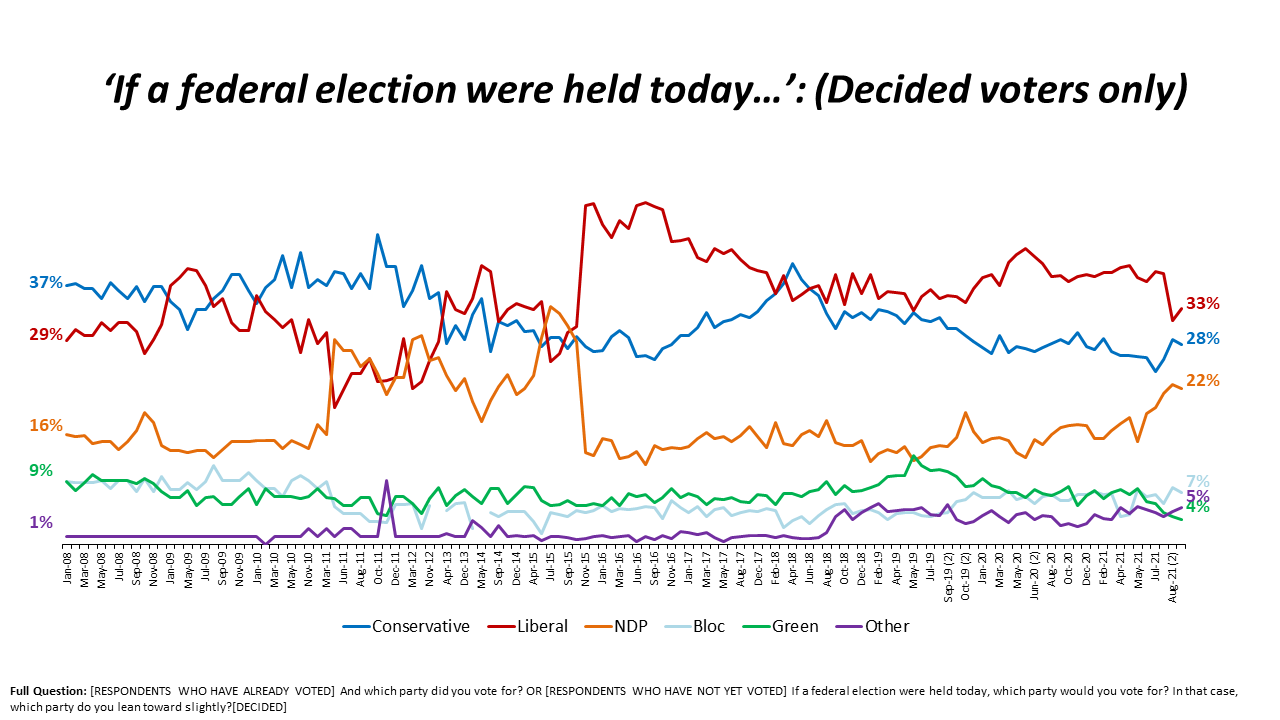
Looking at the horserace in this election compared to the last election by region there’s mixed news. The NDP up in BC, Ontario and Atlantic. The Liberal lead is growing in Quebec and the Atlantic, and the Liberals are 9-points ahead in Ontario. There is little good news for the CPC. However, the Bloc is within the margin of error of their last election outcome and there may still be a delayed boost from the debate question controversy.
Time for a Change
The major challenge for Justin Trudeau throughout this campaign has been how many Canadians feel like it’s “time for a change in government here in Canada”. Time for a change is just 4 points lower than it was for Stephen Harper in 2015 although s strong agreement is 8 points lower than Harper’s mark.
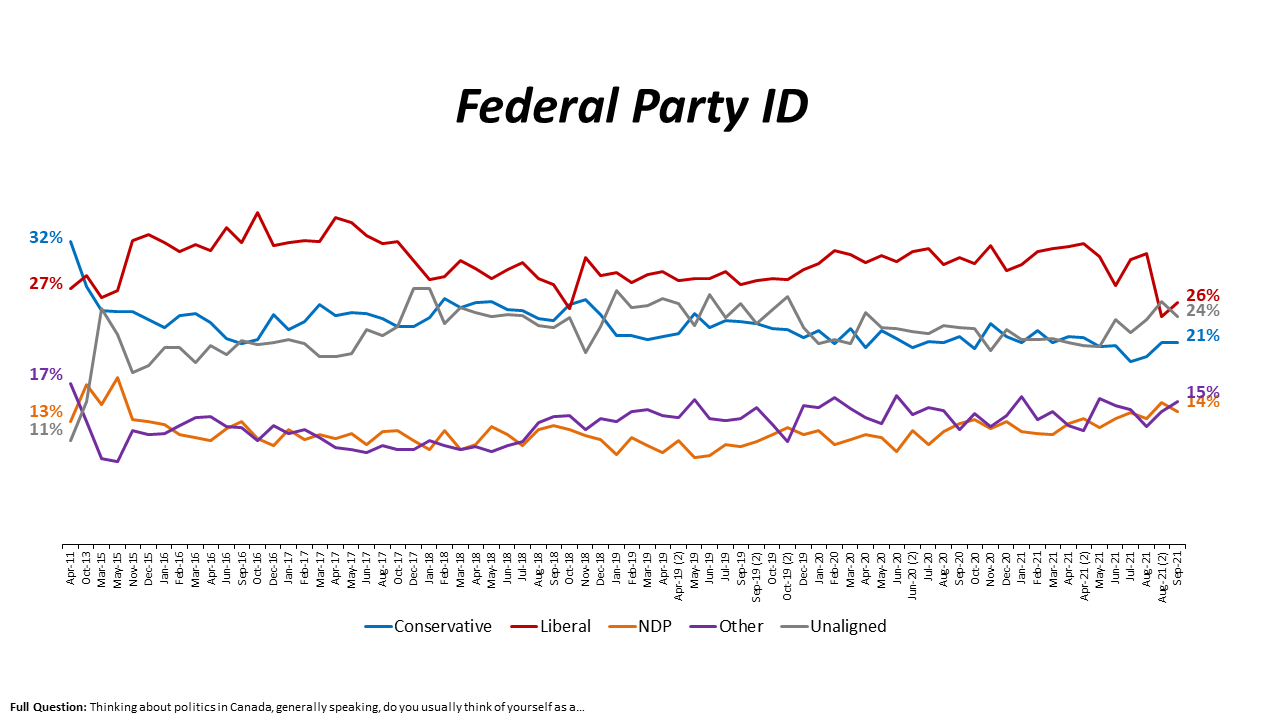
Momentum and Leadership
The public’s impression of O’Toole and Trudeau is negative to both, but Trudeau is now back to being a little more favourable (4 pts.) than O’Toole. By comparison, Blanchet and Singh are seen in a much more favourable light.
Momentum and leadership share a similar story – the CPC is losing its advantage from earlier in the campaign and the Liberals are moving up from the initial hole they were in. Both measures show the NDP and the Bloc with some momentum, although the NDP momentum appears to be fading.
Alternative Governments
A strong majority (63%) of voters believe this election is a two-horse race between the Liberals and CPC. With that in mind, the survey asked respondents whether each potential government would make things better or worse for several issues that have been front and centre in the campaign. Their responses spell trouble for the CPC. The LPC is ahead meaningfully on a range of critical issues. In particular, Liberals having the advantage on “climate change”, containing further waves of COVID-19”, “gun violence” and “women’s rights”.
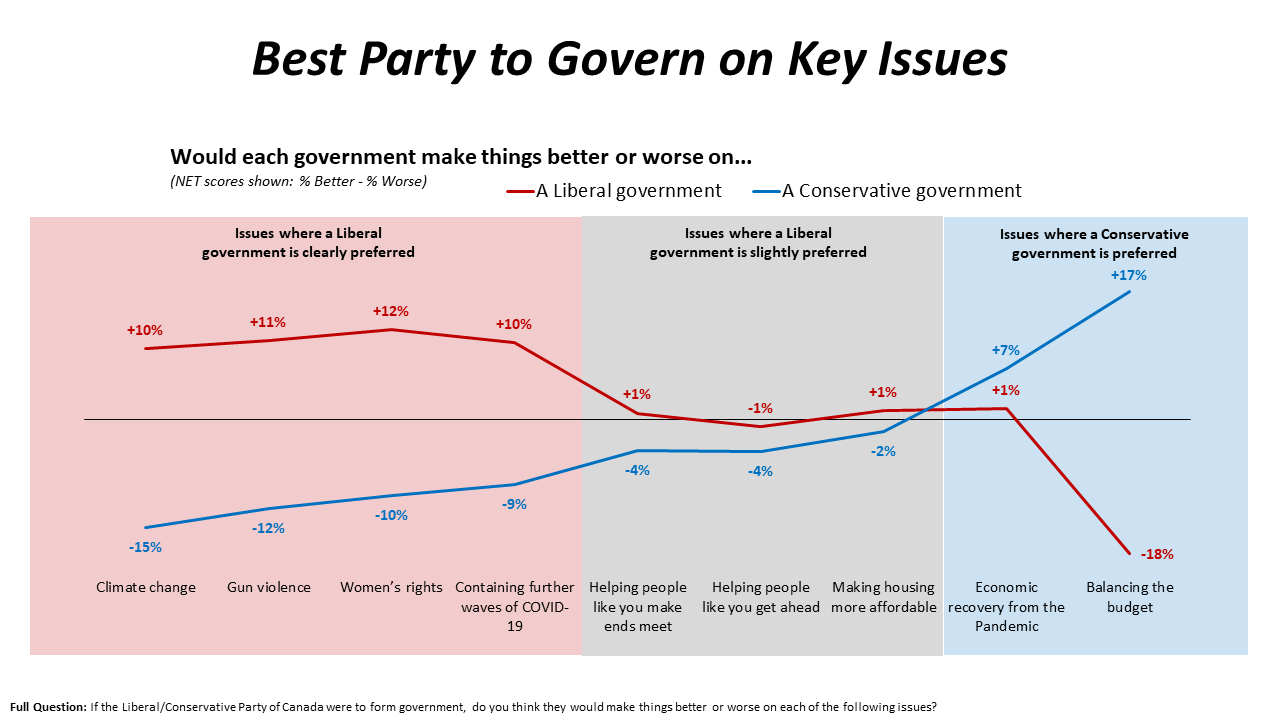
COVID-19
For the Conservatives, COVID-19 response puts them in another bind. Conservatives are based on the extremes of the restrictions issue. Among those who say COVID-19 restrictions are “far too loose” , 35% are Conservatives. However, among those who say COVID-19 restrictions are “far too tight”, 37% support the CPC.. There’s no way for O’Toole to please both factions. Importantly, the PPC make up 25% of those who say restrictions are “far too tight” and will likely remain averse to COVID-19 restrictions. So even though more CPC voters say that restrictions are too loose rather than too tight, pleasing the larger group opens the door to further growth in the PPC vote.
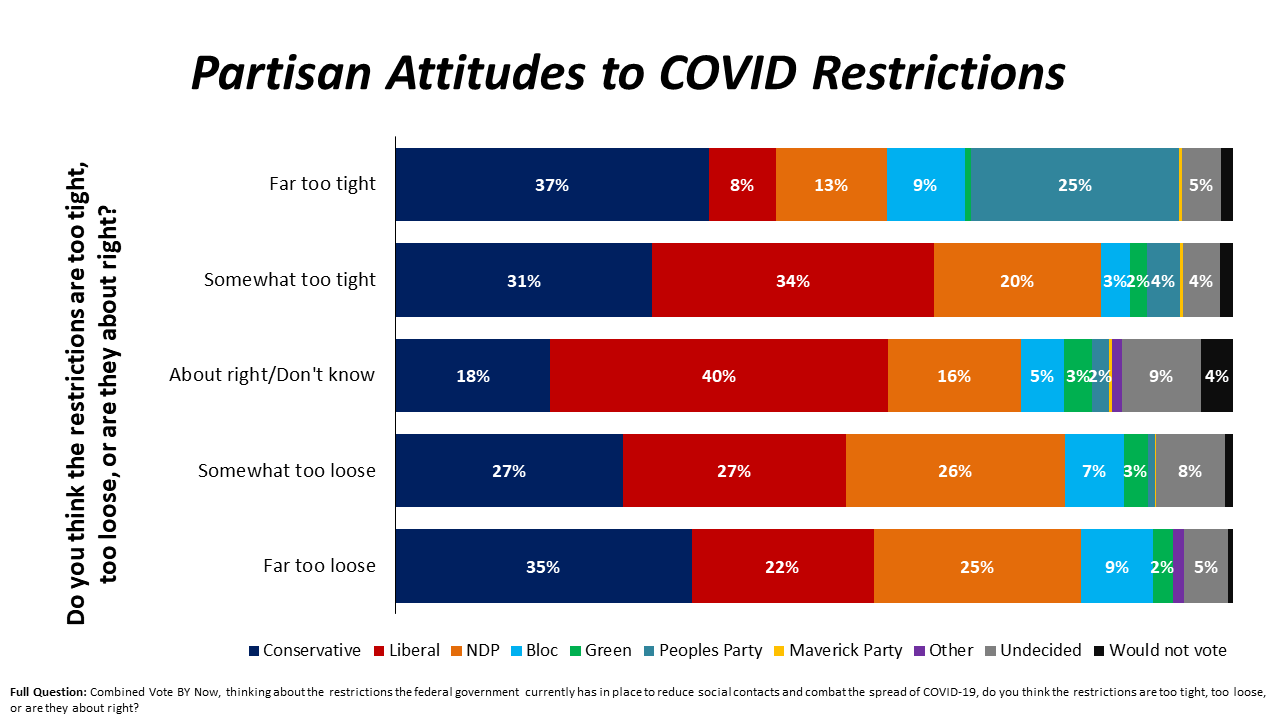
Summary
The Liberals are seeing some success in their three-front battle.
On the main front with the CPC, the CPC vote is down from 2019 in much of the country, the earlier CPC momentum is stalled, and the Liberals have a strong advantage on key wedge issues.
In Quebec, the Liberals have a slightly larger lead over the Bloc now than in 2019, but there is a risk that backlash from the English debate question on Bill 21.
Only in their fight with the NDP are the Liberals on the defensive. The NDP are poised for gains in BC, Ontario and, perhaps the Atlantic. The NDP will be nervous about last minute defectors as the Liberals sharpen their message to ask progressive voters to help them stop the Conservatives, but it seems unlikely that message will be enough to fully reverse NDP gains among economically alienated voters and those with strong left-wing values.



